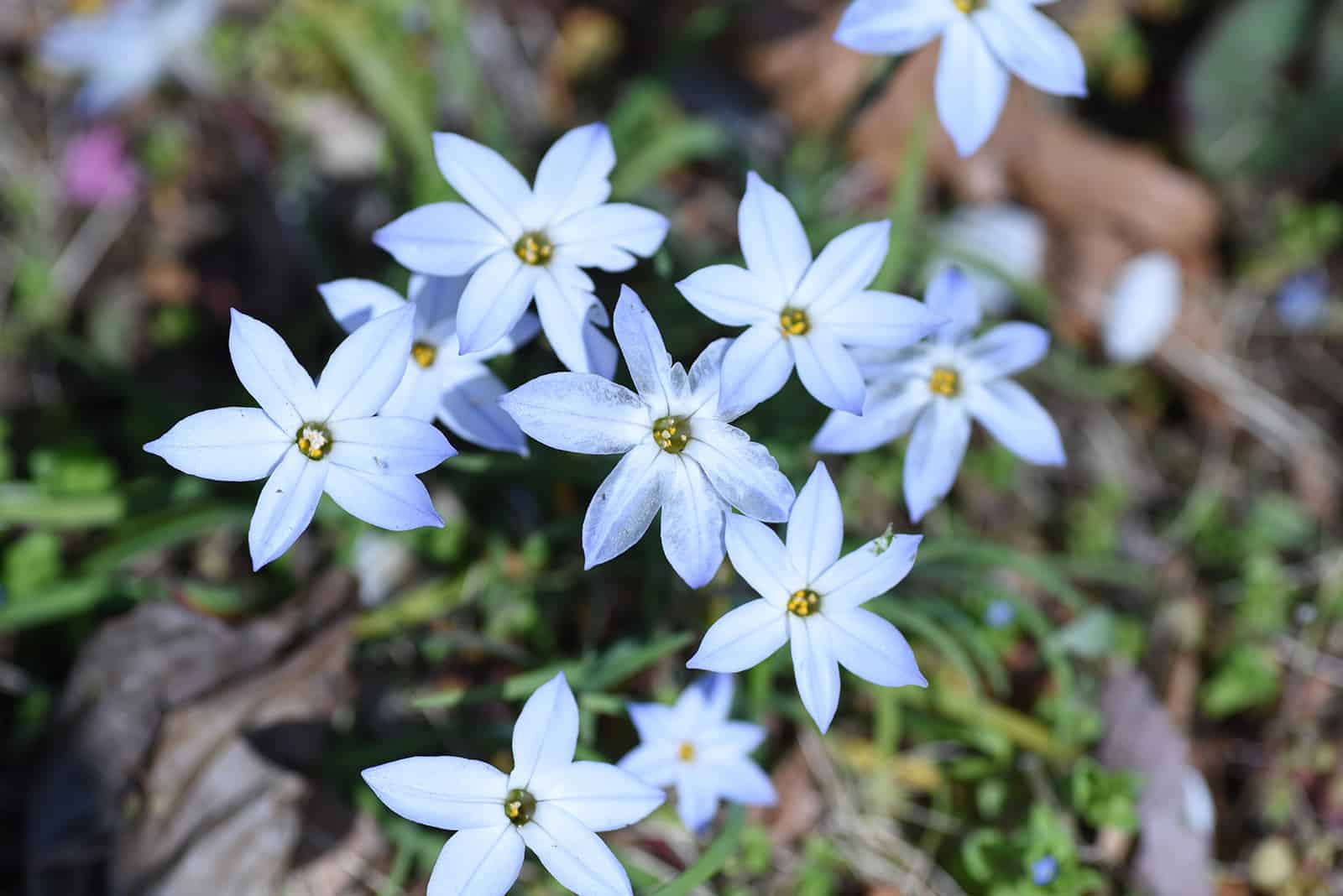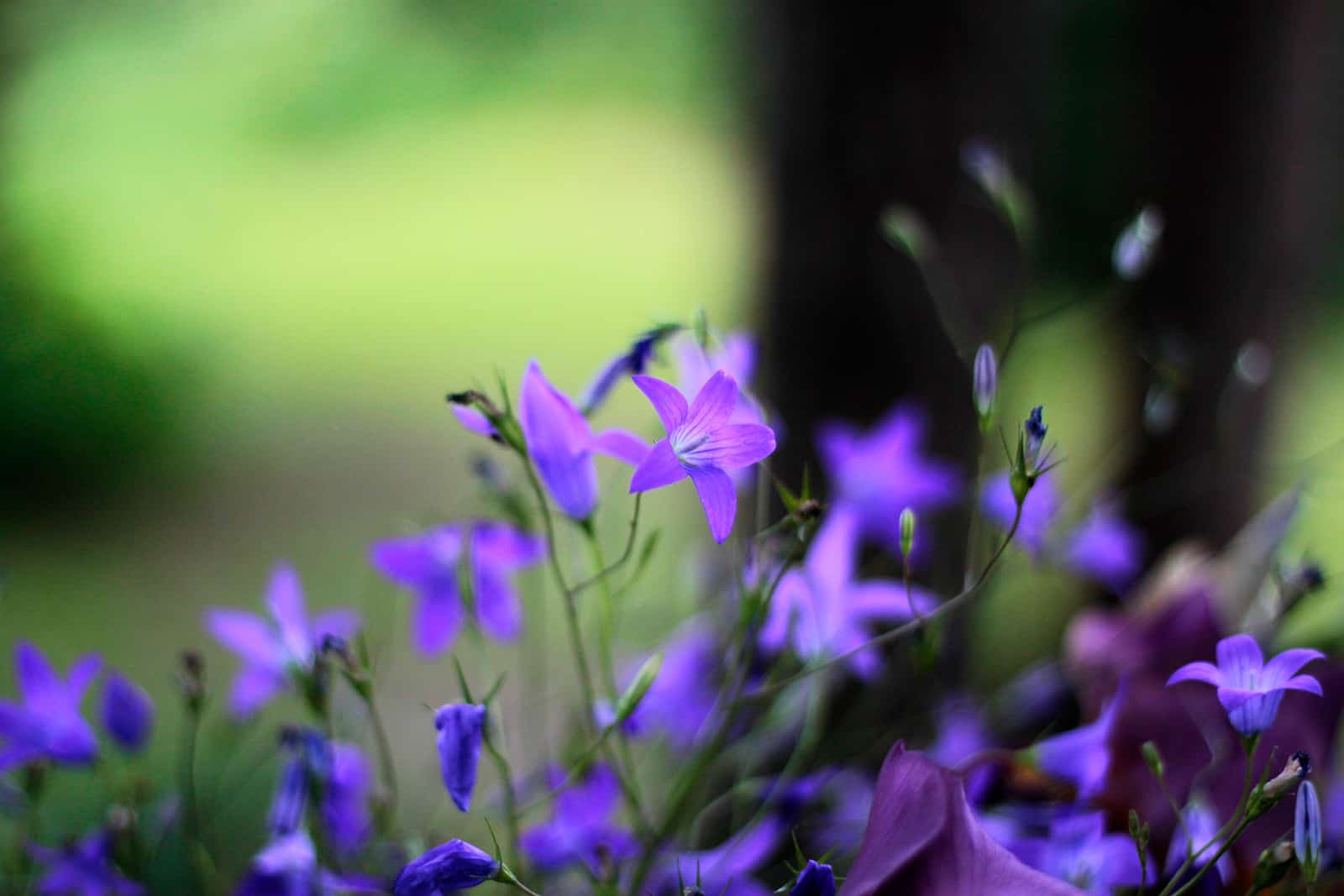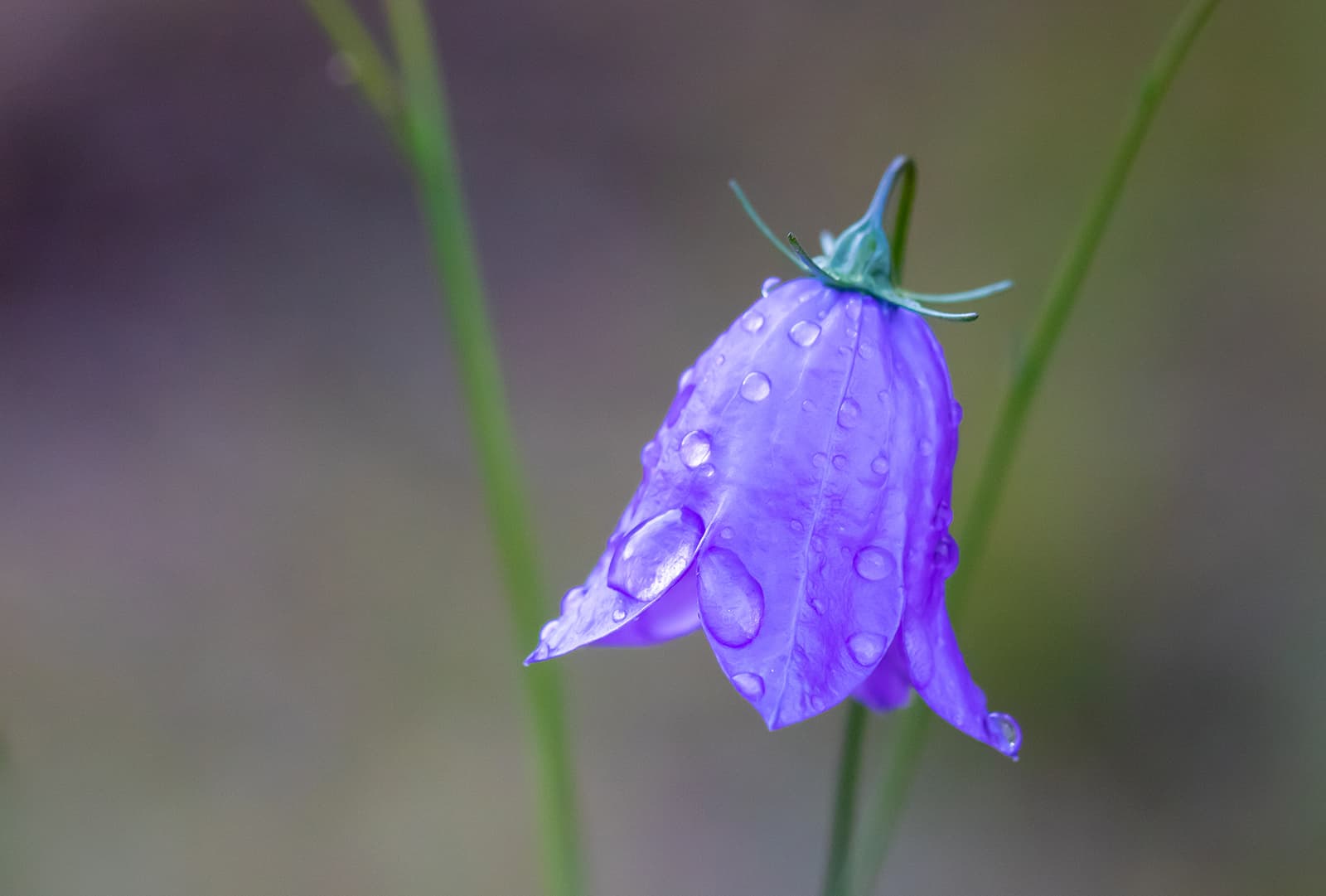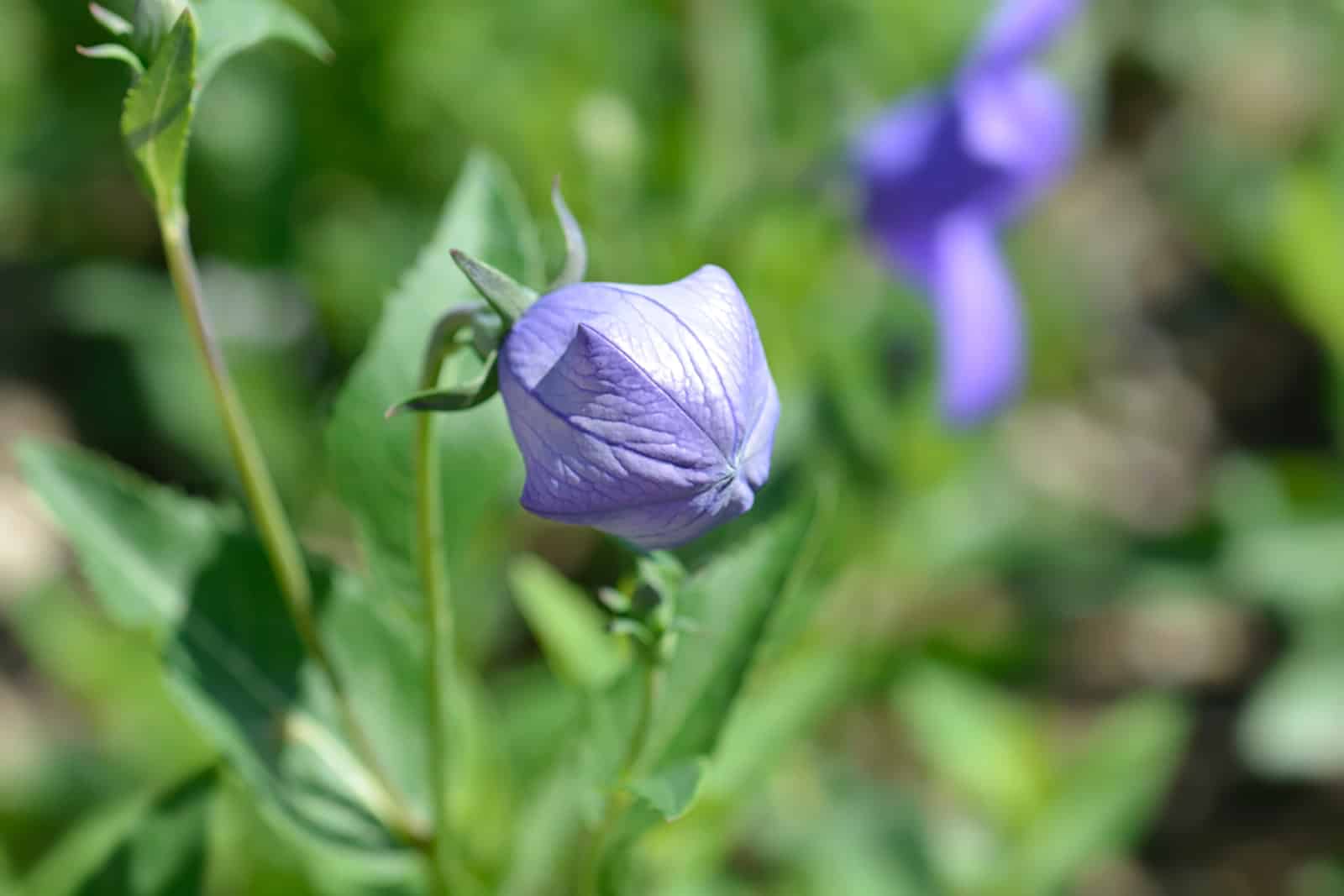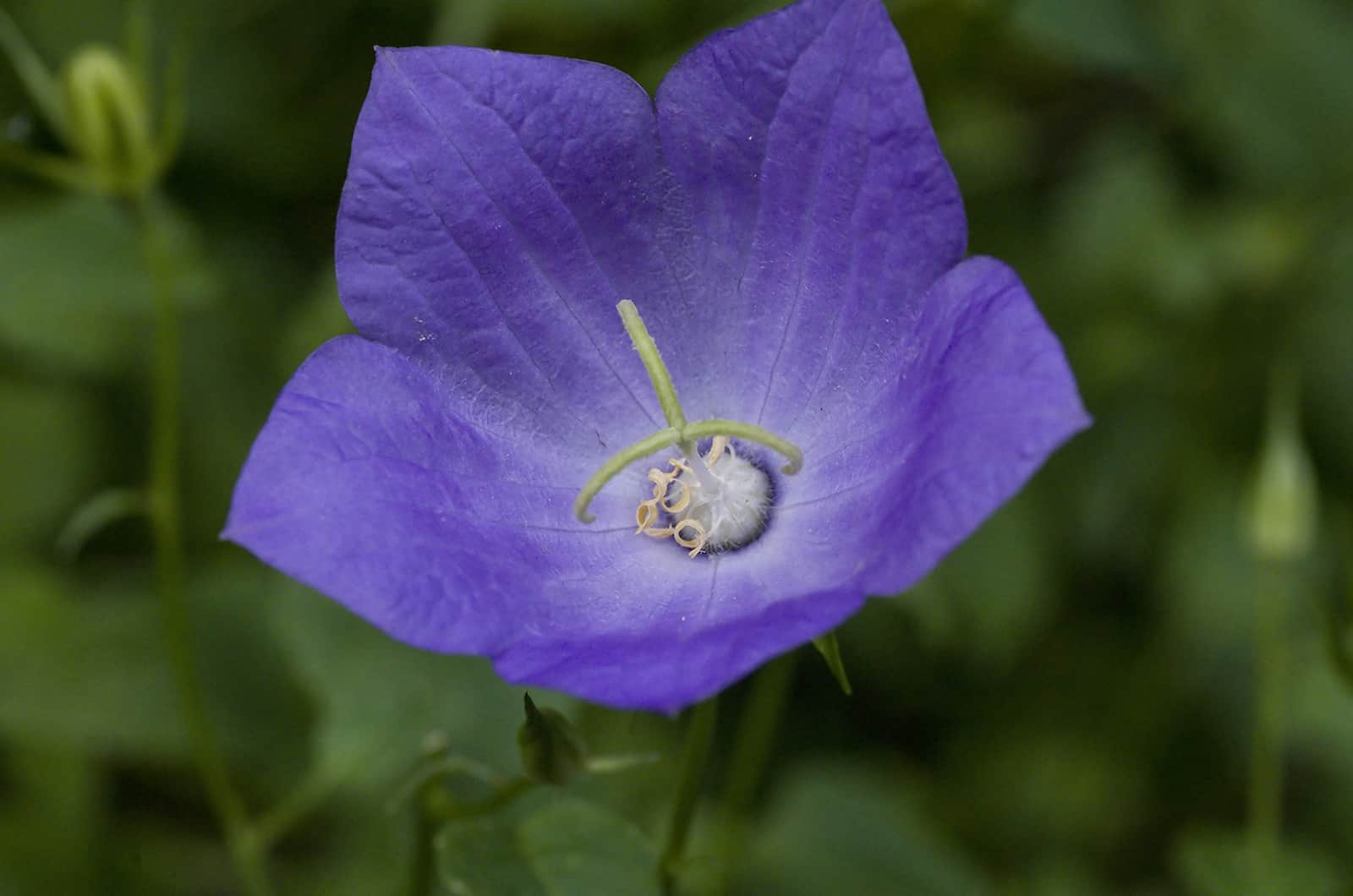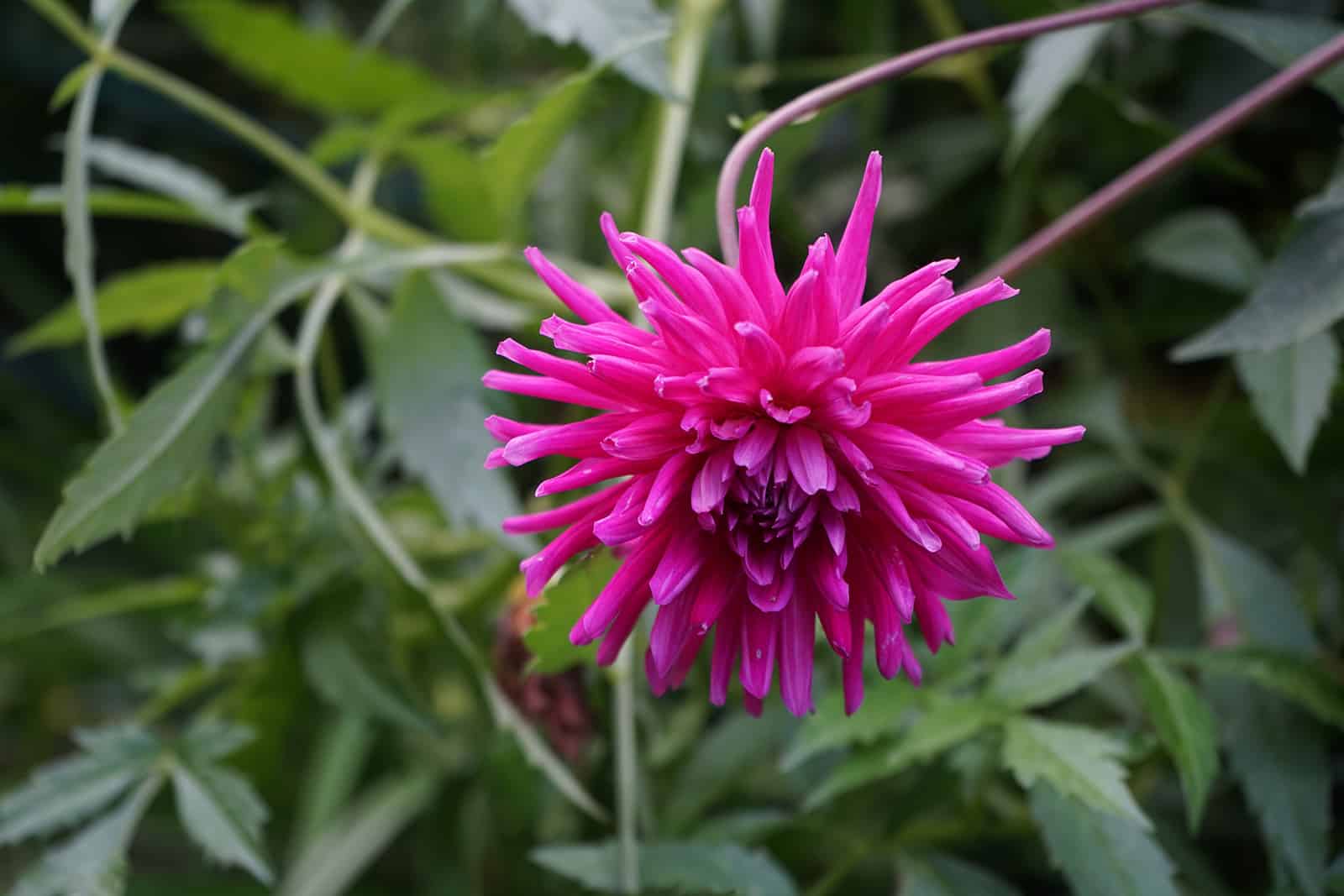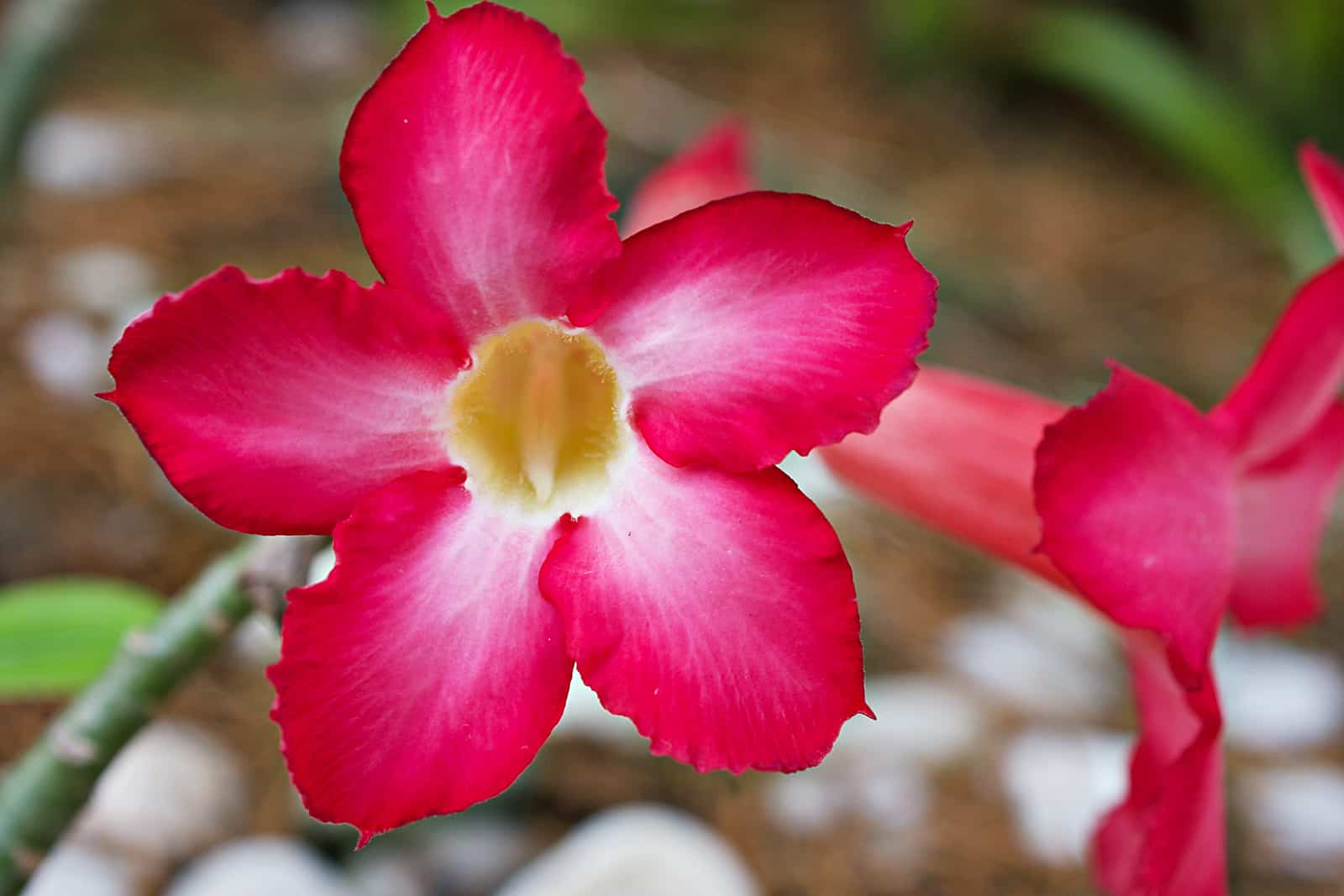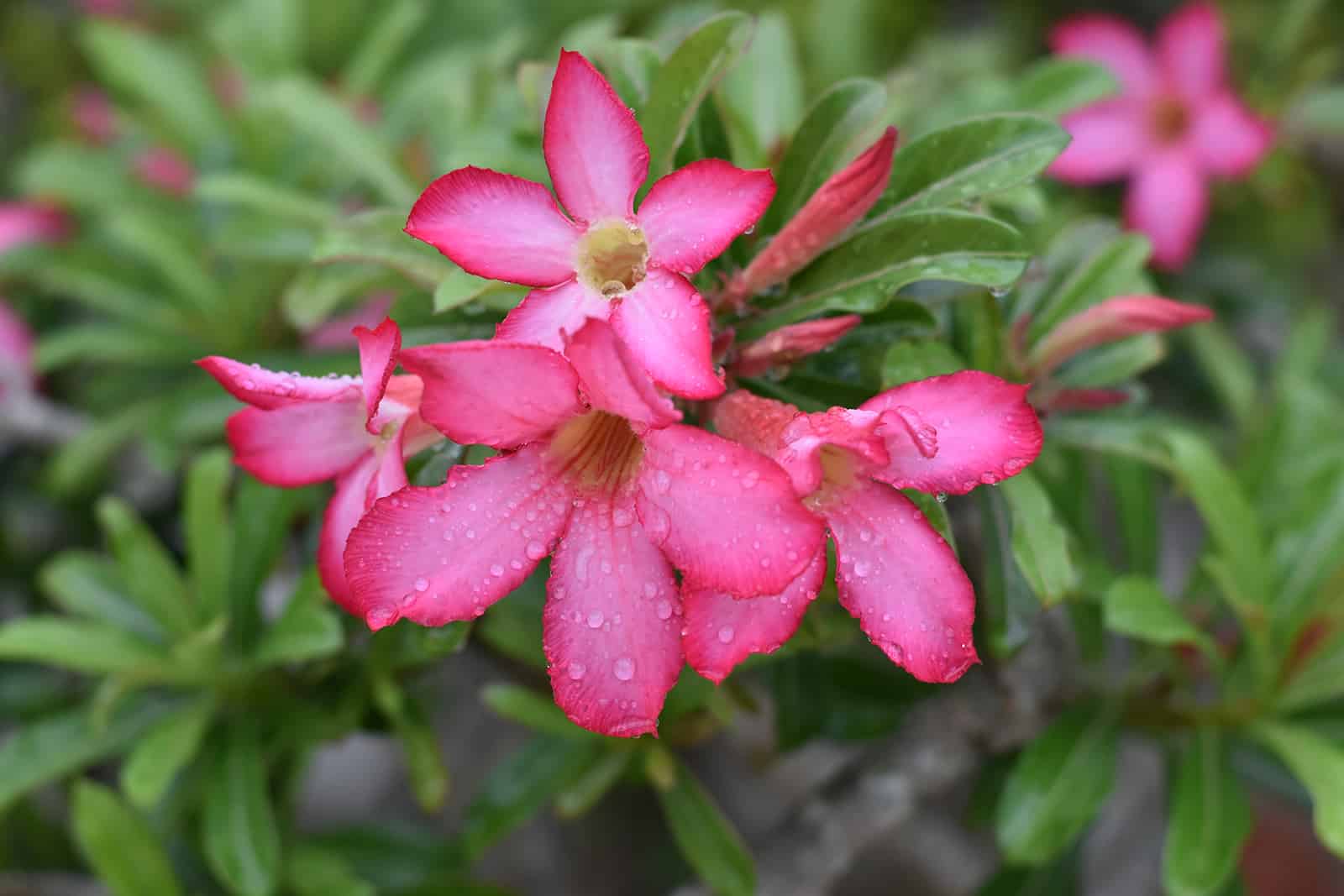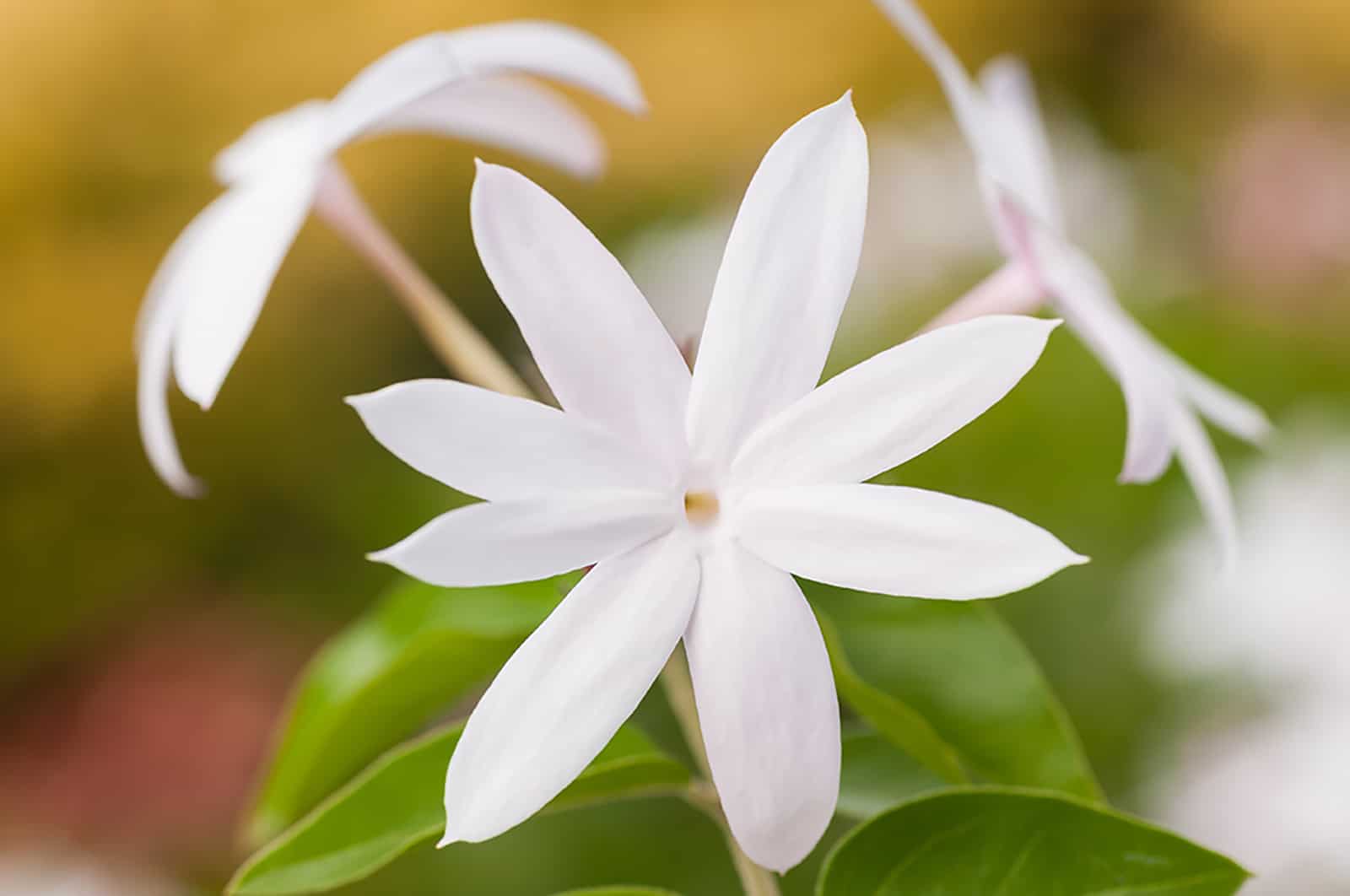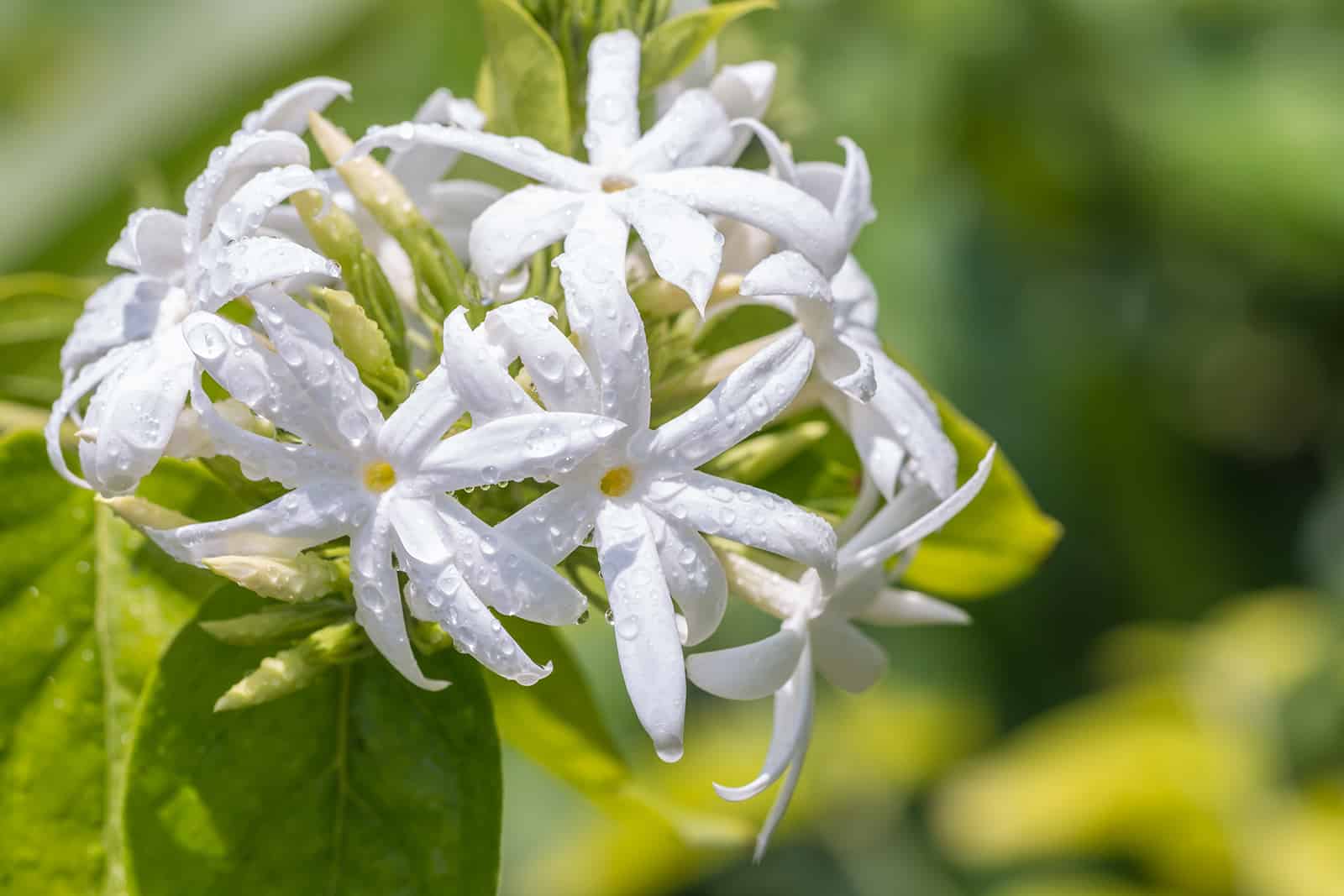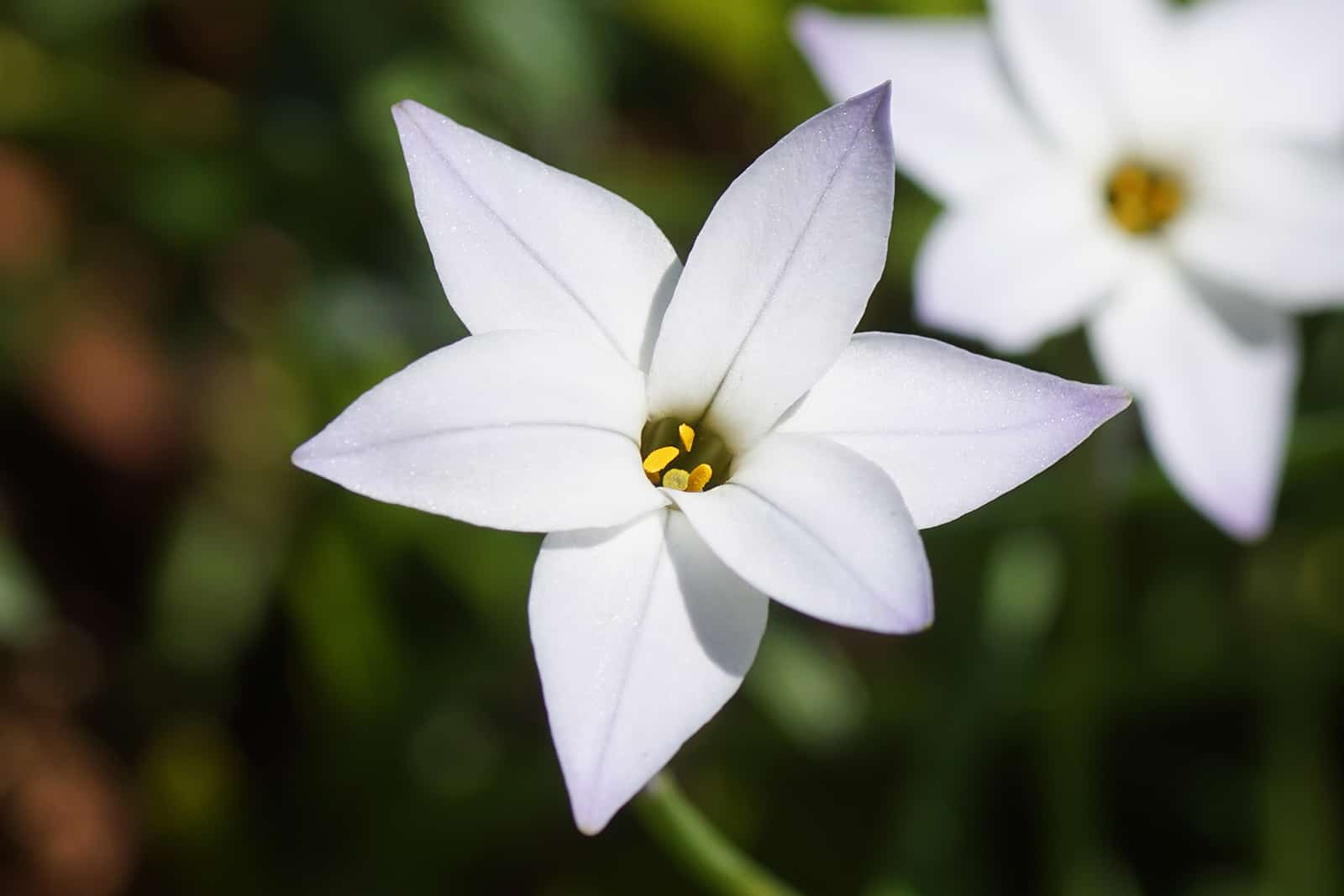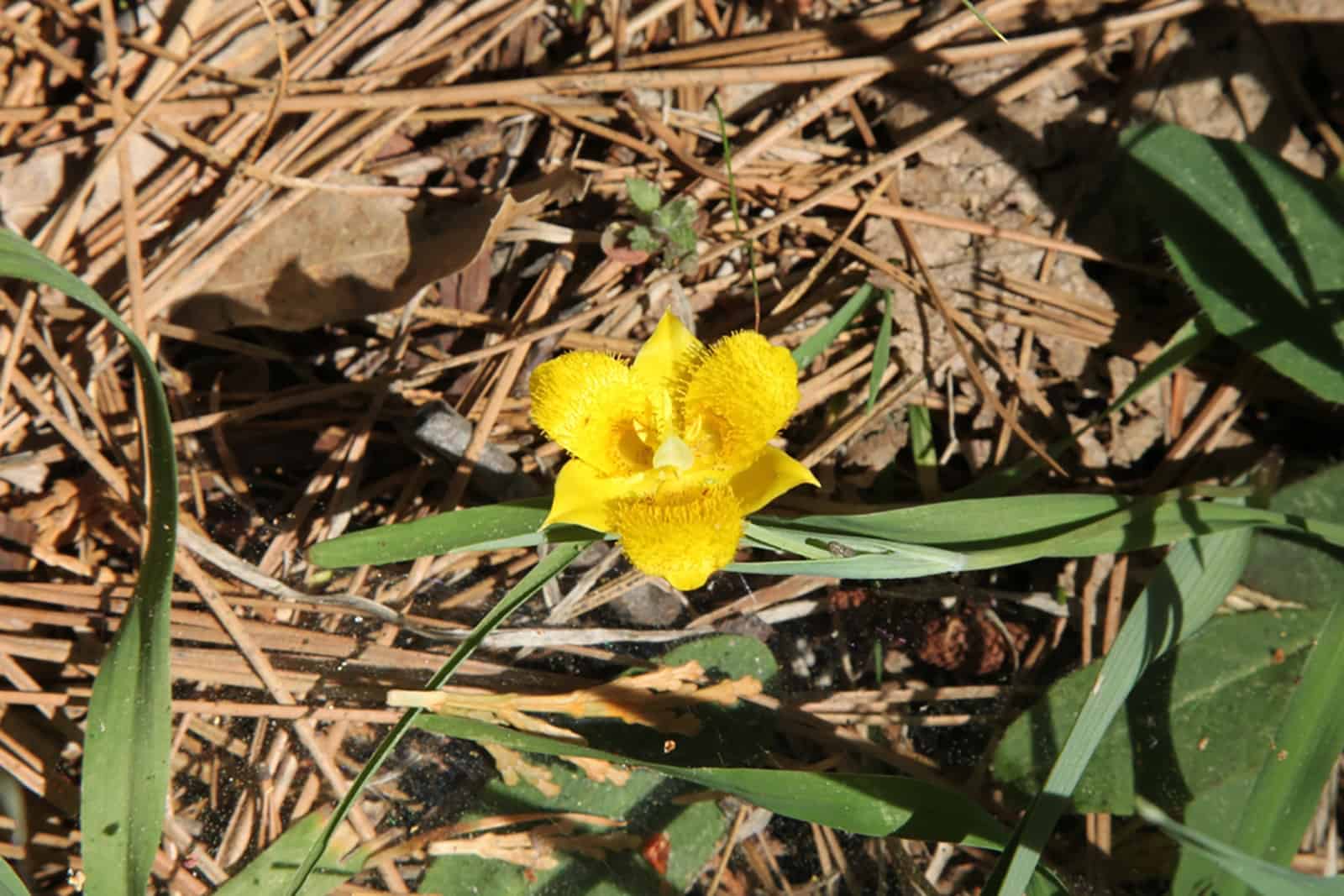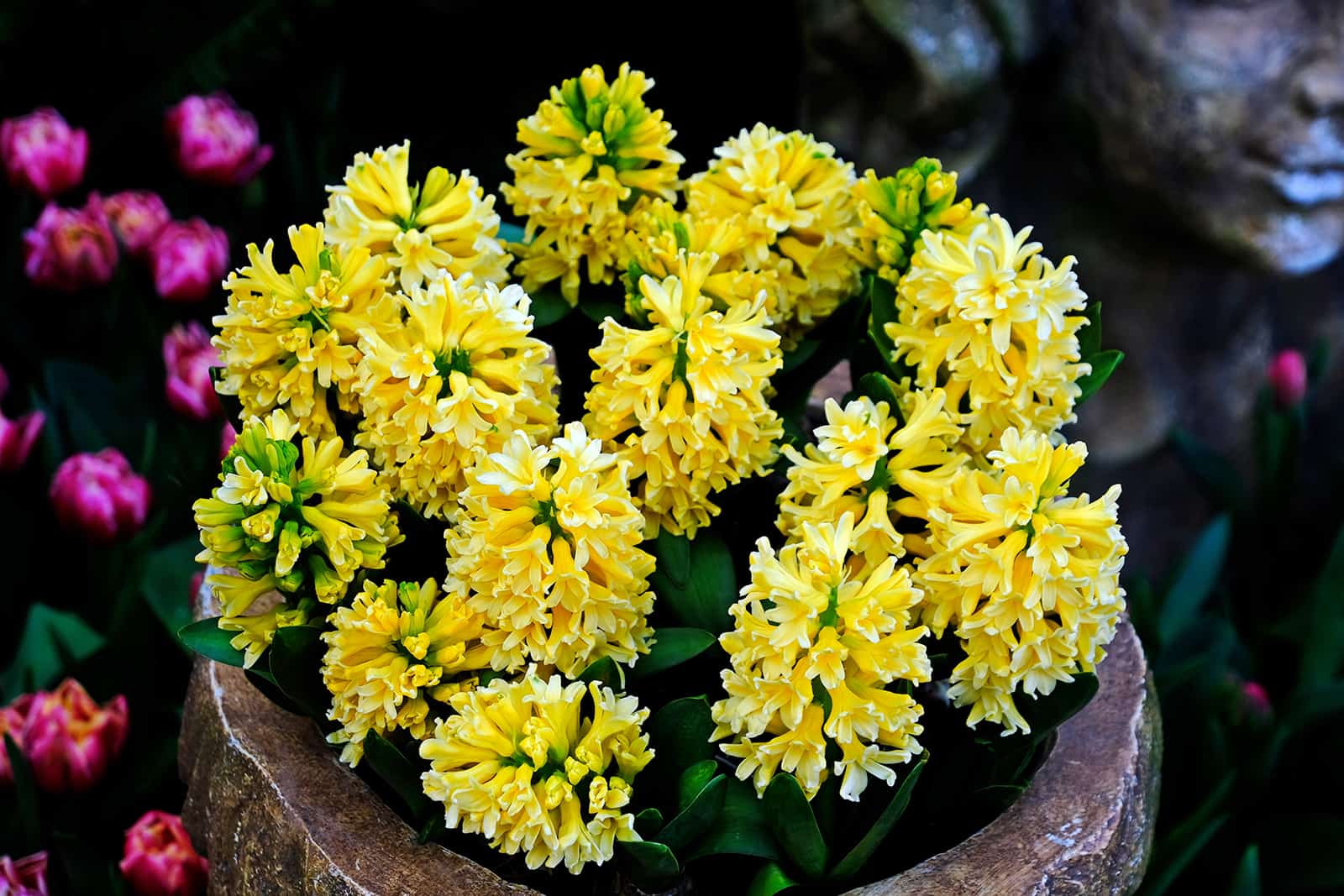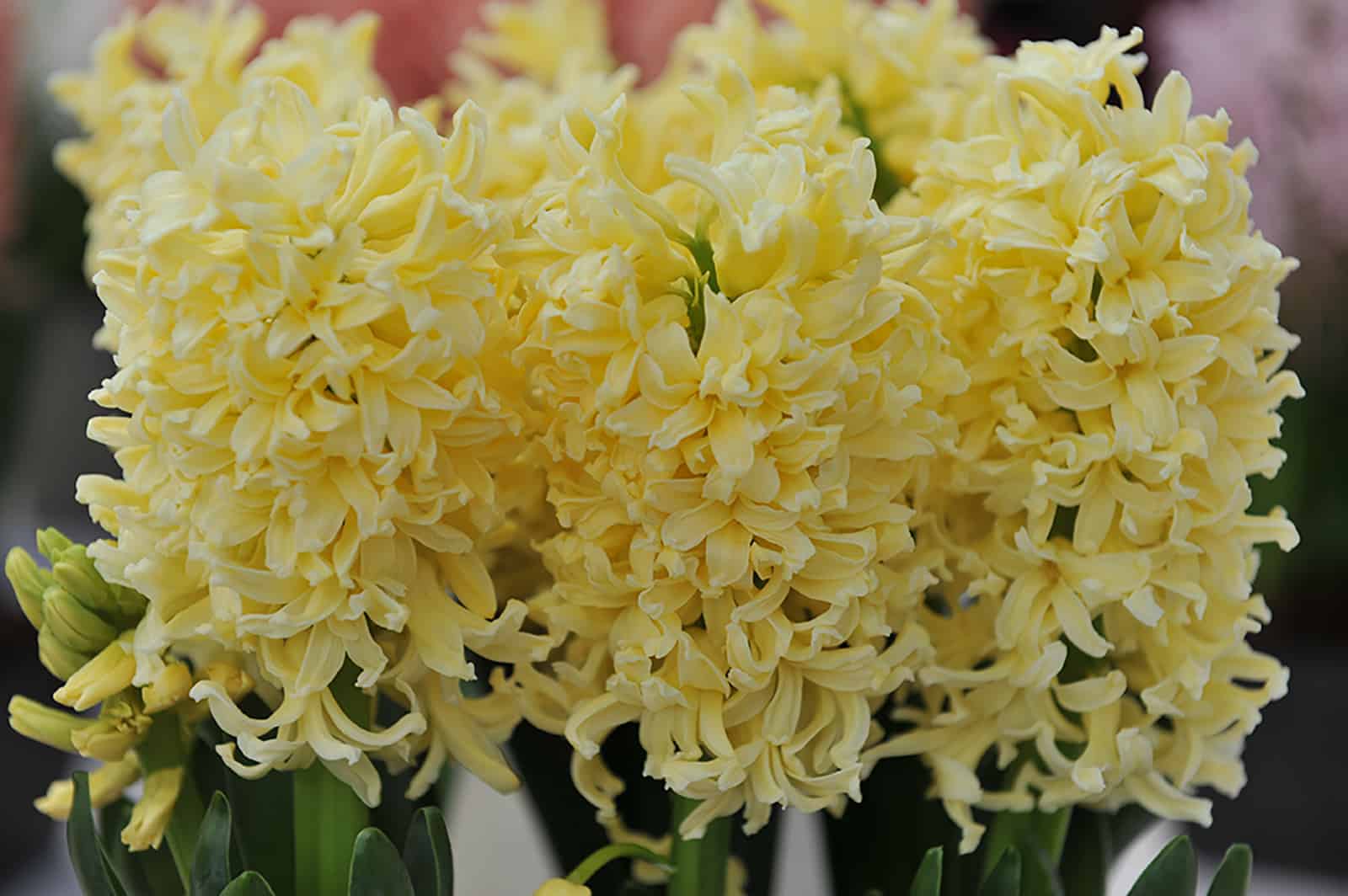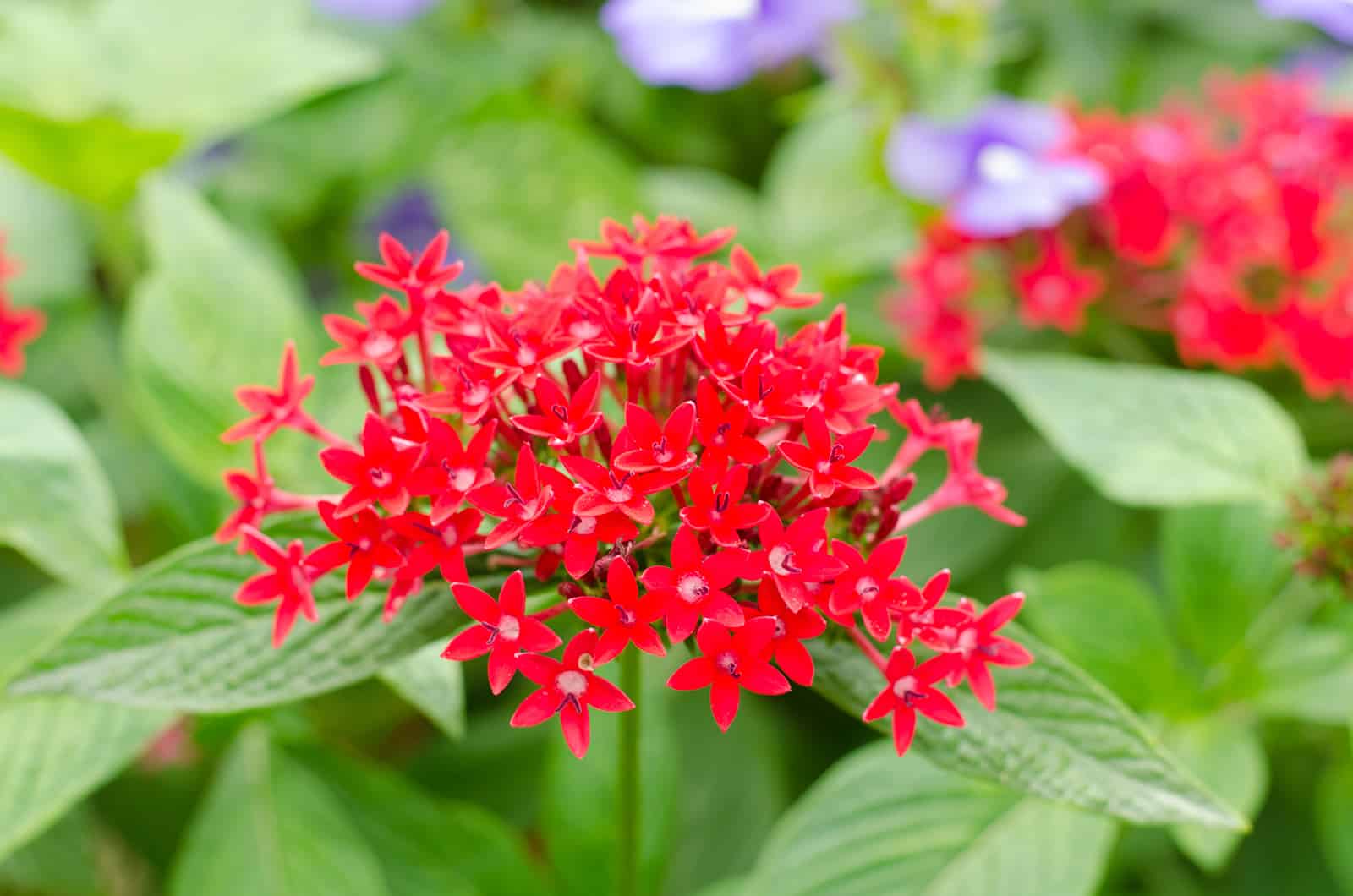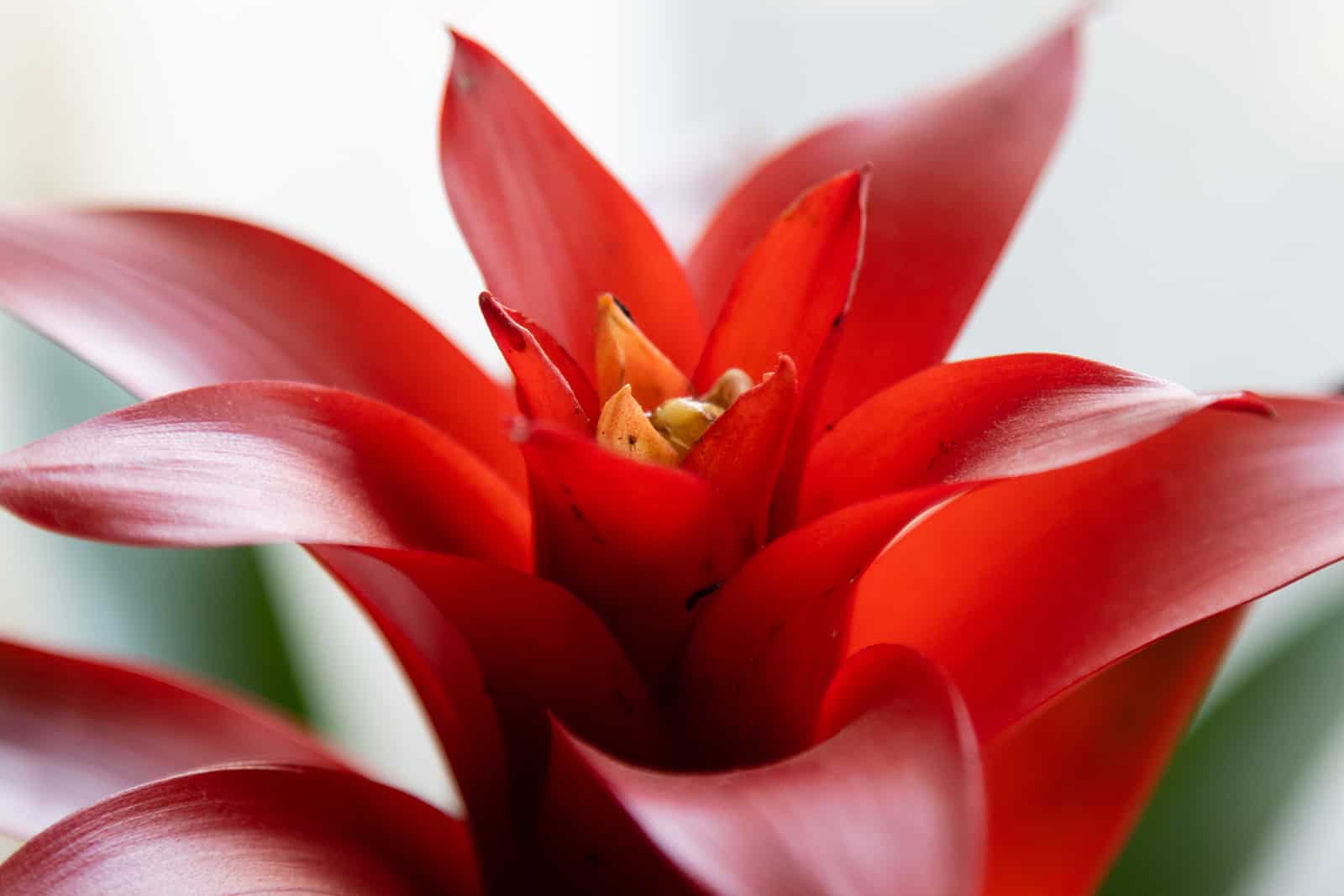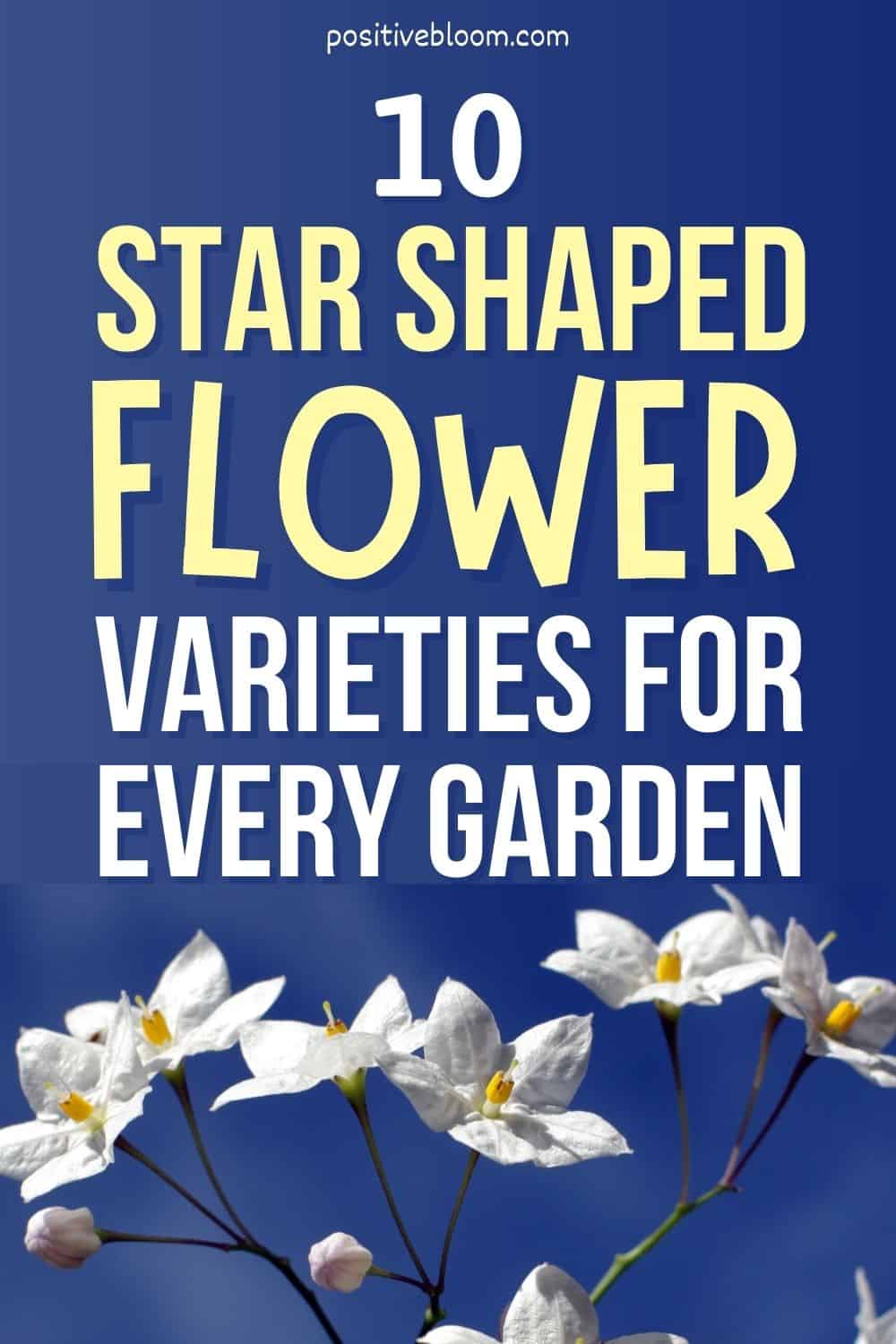We all need some joy in our lives, and starting a flower garden can be a great first step to achieving this. Growing a star shaped flower is a great first choice.
These flowers come in many colors and will light up any room. You can grow them in a pot and put them on your flower shelf or plant them outside and let everyone enjoy their beauty; the choice is yours.
This article brings you a list of the 10 most amazing star shaped flowers and a short care guide for each variety, ensuring you can enjoy them for many years to come.
Let’s dive in!
Purple Star Shaped Flower Varieties
You can never go wrong with purple flowers; they fit with every decor: modern, fun, and retro. And they also accentuate the beauty of trees with purple blossoms and can make your front yard a sight to behold.
We bring you our 2 favorite varieties of purple star-shaped flowers, and in their care guide, you can learn how to care for them to keep their unique purple color perfect for a long time.
Bellflower
The Bellflower is our favorite star-shaped flower because it grows in clusters of purple that cannot go unnoticed.
They are not always purple, even though this is their most common and our favorite color.
Before we go into any detail, here is the basic information:
[table id=54 /]
Appearance
Campanula flowers are not always violet; they can be blue, pink, or white. However, they always come in small clusters, making them so beautiful.
The star clusters appear in summer, usually in June and July, but some can even surprise you with their blooms in October.
Their flowers resemble small bells, hence the name. However, the edges are serrated, which is why they are considered star-shaped flowers.
Depending on the variety and the zone, you can grow them as both annual and perennial flowers.
Light
Bellflowers require full sun to produce their many vibrantly colored blooms. They can tolerate some shade in the afternoon, but don’t expose them to it for too long because it can affect their color.
Water
These flowers have moderate watering needs. Water them when you feel that the soil is dry.
However, you should never allow the soil to dry out completely or be wet all the time.
If you grow these flowers outdoors, you won’t have to water them that often if there is rain. But, if the season is particularly dry, feel free to water them.
Temperature And Humidity
These plants love warmer climates. Their ideal daily temperature is around 65-70 °F (18-21 °C), but they enjoy cooler nights, at about 50 °F (10 °C).
They cannot tolerate extreme heat or cold, so they’re perfect for small cottage house kitchens.
You don’t have to make any additional changes to your home in terms of humidity if you want to grow these plants indoors. The room’s humidity suits them just right.
Soil And Fertilizer
Bellflowers don’t like being soaking wet, so you should plant them in a well-draining medium. They also don’t require a specific pH level and can tolerate even acidic mediums, as long as the drainage is good.
You need to fertilize these flowers every so often; once in spring and then in mid-summer is more than enough. Use a well-balanced, all-purpose fertilizer, such as triple 10, and you will have no issues.
Balloon Flower
Balloon flowers are our favorite climbing plants. You can plant them to grow up over a white fence, and they’ll make quite a sight to see.
Here are the general specifics:
[table id=55 /]
The Balloon flower is not only easy on the eye but can even be used in making soups and other dishes, so long as you keep away from the roots!
Appearance
This plant got its name from its balloon-like flower buds. It produces flowers in small clusters that resemble small bells, but once they open, they are pure violet stars. Because of their appearance, these flowers are also called Chinese bellflowers.
Its flowers are usually purple-blue, but they can also be pink and white and appear in summertime.
They are herbaceous perennials, which means their above-ground parts will die, but their roots stay intact, so you don’t have to plant them every year.
Light
This variety thrives best in full sun, meaning it needs 6-8 hours of light every day. However, it can tolerate partial shade and even benefit from it in the afternoon when the sun is scorching.
Water
Young plants love constantly moist soil. However, as they get older, they need less and less water. Medium moisture is perfect, and if you forget to water, don’t worry!
This plant can survive a short drought period.
If you live in an area with enough rainfall, you won’t need to water this plant.
Temperature And Humidity
Balloon flowers love warm temperatures, and anything between 60 and 80 °F (15-27 °C) is ideal. They can even withstand hotter weather conditions if they get enough shade when temperatures are at their highest.
However, frost and extreme cold can kill balloon flowers, and they will go back into the ground when the temperatures get colder.
This plant doesn’t have any preference when it comes to humidity. It thrives equally well in dry and humid environments, as long as the soil is moist enough.
Soil And Fertilizer
This purple flower will grow in the vast majority of soils; anything with a pH level between 5.5 and 7.5 is perfect.
However, they need a fertile medium with excellent drainage to even consider growing.
You don’t need to fertilize balloon flowers if your soil is rich in nutrients and organic matter. However, if you need to replenish some of the nutrients, you can add some compost in the fall, compensating for the energy spent on blooming.
If your soil is terrible, you can add a slow-release, all-purpose fertilizer at the beginning of the growing season, ensuring your plant will have enough nutrients all year long.
Pink Star Shaped Flower Species
If you want to have an idyllic country house, you have to have pink flowers in your garden, and there is a variety of books about flowers and decoration that can make it happen sooner than you think.
We bring you our favorite 2, but if you have any other suggestions, let us know, and we will include them in our next list.
Dahlia ‘Reputation’
This is one of the most beautiful pink flowers you will ever encounter. It will go nicely with your white roses, petunias, and alliums, and you can even cut flowers to make a fantastic bouquet.
Before we start, the basic info:
[table id=56 /]
Dahlia ‘Reputation’ is unfortunately toxic to pets, but if you can train your dogs not to go to your flower garden, you can grow these unique flowers without worrying.
Appearance
This dahlia cultivar has a deep pink hue that you simply cannot imagine. Its magenta-pink flower looks like a flaming star.
It is also a variety of cactus dahlias because of its sharp and pointy petals that resemble small fiery spikes.
This variety shows its beautiful flowers in mid-late summer and can last until mid-November or until the first frost kills it.
This flower is also a perennial plant, and if you plant them together with the purple flowers from below, your garden will be one of the most vivid places in the entire countryside.
Light
This is also a flower that requires full sun. How convenient! You can grow them all side by side and enjoy them every morning with a cup of coffee or English breakfast tea.
Sunlight provides energy, which is essential for the formation of large flowers. If you keep your dahlia hidden in the shade, its flowers will be far from majestic.
Water
Dahlias don’t require daily watering. In fact, if you water your dahlias every day, there’s a good chance you might overwater them, leading to root rot.
Instead, water your dahlia ‘Reputation’ thoroughly once or twice a week, and it will be forever grateful.
Of course, you should adjust to your personal climate, if the weather is hot, you might need to water the dahlias more, and if the season is rainy, you might need to reduce watering.
Temperature And Humidity
All dahlias are a bit delicate and require specific daily and nightly temperatures for flowering and growth.
The ideal daily temperatures are between 70-75 °F (21-24 °C) and should not exceed 80 °F (27 °C). Optimal night temperatures are between 60-65 °F (15-18 °C).
Dahlia ‘Reputation’ doesn’t require high humidity to flourish. It does better in low humidity environments and only needs high humidity when you store its tubers over winter.
Soil And Fertilizer
This dahlia variety loves a well-draining soil rich in nutrients and organic material. It also loves slightly acidic to neutral soil with a pH level of between 6.5-7.0.
It cannot survive in heavy mediums, such as clay soils, so add aged manure, sand, or sphagnum moss to improve drainage.
When fertilizing dahlias, you need to choose the correct fertilizer. Choose a fertilizer rich in potassium and phosphorus as they will bring out the beauty of the flowers.
You should fertilize your plant only twice after planting it and then again a month later.
Impala Lily
The impala lily looks more like a small tree than a flower. However, when you see the tiny star shaped clusters of pink flowers, you will regret not growing one sooner.
Here is the basic information:
[table id=57 /]
Appearance
The impala lily is a succulent tree, believe it or not. We always keep our baobab-like trees with green leaves at around 4-5 feet (1.2-1.5 m) tall.
The best thing about this tree is that its small flowers are typically white with pink or dark pink edges but can also be crimson, pink, or white.
They are perfect for beginner gardeners as they are extremely low maintenance and can survive prolonged periods of drought.
Their blooming time is late spring or early summer to early fall, May to September.
However, it takes many years for this perennial to produce any flowers, so be patient!
Light
The impala lily requires bright, indirect light. Don’t expose it to direct sunlight as it can lead to sunburn.
Also, keeping this flowering plant in the shade will only make it leggy and unattractive.
Water
Adenium multiflorum has the watering needs of a typical succulent. Allow the soil to dry out completely before the next watering.
This way, you can avoid overwatering and prevent root rot.
However, if the weather is scorching, you should water your plant more frequently.
Temperature And Humidity
This plant is native to Africa, which means it likes the heat; anything between 75-95 °F (24-35 °C) is perfect.
Anything higher than 95 °F (35 °C) can cause stunted growth and reduce flowering. Also, this flowering plant can survive temperatures as low as 50 °F (10 °C) if you don’t give it any water.
However, you should take them indoors in winter if possible or devise some gizmo to keep them from freezing.
This plant loves moderate to high humidity, so if you live in more arid climates, consider misting it in the evening.
Soil And Fertilizer
Plant your impala lily in a succulent mix. These mixes are sandy, so you can make it yourself if you don’t have one at hand.
Add sand to improve drainage, and they will light up your rock garden.
Since these plants love succulent soil mixes, which usually don’t have enough nutrients and organic content, they like to be fertilized.
You can use an all-purpose, water-soluble, liquid fertilizer diluted to half-strength once or twice a month. If you’re like me and often forget to fertilize your plants more than once, you can use slow-release fertilizer and follow the instructions on the back.
White Star Shaped Flower Types
White flowers shaped like stars are an essential component of a rustic landscape. We’ve chosen jasmine and starflower as representatives of white star-shaped flowers.
They are reminiscent of a happy childhood and good times.
Learn more about their requirements in our care guide and grow your own garden varieties!
Star Jasmine
Star jasmine truly is the star of all flowers. Our favorite climber produces white clusters of star-shaped flowers that contrast against the greenery of the vines nicely.
First, general information:
[table id=58 /]
This unique plant can be quite extensive if you don’t trim it. However, it is safe for your pets and children, so you can let it grow.
Appearance
Other common names for star jasmine are jessamine and confederate jasmine. This plant is a vine or shrub with glossy green leaves and clusters of white stars.
It produces flowers in early spring and summertime, which means you can enjoy this scented plant for many months.
You can use it as a groundcover because of its vine-like shape. Another benefit of star jasmine is its strong fragrance, which attracts bees and other pollinators.
However, keep in mind that these plants spread quickly and really far, so you should plant them around 4 feet (1.2 m) apart.
Light
The fantastic thing about jasmine is that it loves both full sun and partial shade.
However, you should expose star jasmine to at least eight hours of sunlight each day for the best stars.
When you’re growing it as a groundcover, ensure it gets plenty of sunlight, or it will produce fewer flowers.
Water
Jasmine has medium water requirements, and it is neither drought-tolerant nor water-hungry. You need to devise a regular watering schedule and stick to it.
Water your plant once a week or when you feel that the topsoil is dry. However, always allow the soil to dry before the next watering.
If the temperatures are higher, you might need to water it twice a week.
Also, don’t forget about the rain. You don’t need to water jasmine if you live in a rainy region and the temperatures aren’t that high.
Temperature And Humidity
This might surprise you, but jessamine is actually a cold-hardy plant. It can tolerate temperatures down to 10 °F (-12 °C), although not for a long time.
It flourishes in temperatures between 60-75 °F (15-24 °C). It can handle some heat, but high temperatures can lead to sunburn, and the leaves may turn brown.
It also loves medium humidity levels, so you can consider spraying them in the evening if the weather has been particularly dry.
Soil And Fertilizer
Star jasmine doesn’t have many preferences regarding soil. It can grow in alkaline and acidic soils, clay, and sandy substrates. The only thing it prefers is moisture, so we always add compost when planting jasmine.
We never add fertilizer when the jasmine is young. It has compost and doesn’t need additional food.
Once the plant is established, we add well-balanced, slow-release fertilizer once or twice a year, usually in early spring and then in mid-summer if there is any need.
Spring Starflower
If you’ve ever watched The Lord of the Rings, this flower will remind you of simbelmynë. Enjoying Tolkien’s novels surrounded by clusters of starflowers is a free therapy session no one can deny you.
Here are the general specifics:
[table id=59 /]
Once you get used to the slight onion scent that this plant’s leaves exude, you will enjoy them. Grow some lavender near spring starflower pots, and you will enjoy these flowers even more.
Appearance
Flowers come in small clusters of sweet-scented white stars. We love the white version, but you can also find species that produce blue, pink, and purple-blue stars.
They have a long blooming season that lasts for two months, starting in February.
It is a perennial, so you won’t have to buy a new plant every year.
Light
It seems like we have accidentally made a list of plants that love full sun. Spring starflower is no exception. It can tolerate partial shade, but since it blooms in February, providing it with 6-8 hours of sunlight shouldn’t be an issue.
You can keep it on a windowsill and let it enjoy the sunshine.
Water
This plant doesn’t have any extreme needs when it comes to watering. Keep the soil moderately moist until it sprouts.
After that, you should water the spring starflower only when you feel that the topsoil is dry.
And finally, make sure you don’t overwater the plant! You don’t want to be buying new ones every year!
Temperature And Humidity
Spring starflower is a zone 5 plant but can thrive in warmer zones. This means that it can endure low temperatures.
However, if the temperatures get below 14 °F (-10 °C), you should protect it with a winter mulch.
It produces flowers in early spring when the temperatures are warmer but not extremely warm.
It doesn’t have any particular humidity requirements, making it perfect for every home.
Soil And Fertilizer
This plant will thrive in alkaline, neutral, and acidic substrates alike. Its only requirement is a loam, moist, well-draining soil.
There is no need for additional feeding if its soil needs are met.
Yellow Star Shaped Flowers
We couldn’t decide which flowers to include in this list as there are so many excellent yellow star-shaped flowers, such as the golden star and the yellow star of Bethlehem, which definitely deserve to be on it.
Eventually, we decided on the star tulip and yellow queen hyacinth because they put smiles on our faces whenever we see them.
Yellow Star Tulip
This fuzzy flower simply had to be put on the list. Once you see it in its full glory, you won’t be able to resist picking a few and putting them in a vase in the middle of the room.
As always, basic info:
[table id=60 /]
Appearance
The edges of this flower are serrated, giving it that signature star-shaped look. The flowers are yellow and sometimes streaked with white but can also be poppy-red.
The conspicuous flowers of this perennial appear in mid-late spring.
Light
This plant can tolerate full sun and partial shade alike. However, if you want flowers with vibrant colors, full sun is the better choice.
Water
Just like the flowers from above, it has average water needs. Water them regularly once a week when they are young; established plants don’t need irrigation.
And don’t overwater it; none of the plants like it!
Temperature And Humidity
This plant likes warmer temperatures, between 60-75 °F (15-24 °C). The best time to plant the seeds in a pot is when the outside temperatures are between 40-70 °F (4-21 °C).
It doesn’t have any particular humidity requirements, and as long as you meet its watering needs, you should have no problems.
Soil And Fertilizer
It loves well-draining loam clay soil that is rich in organic material. You can add compost when you’re about to plant the flower, and it shouldn’t need any extra food.
You can use water-soluble liquid fertilizer diluted to half-strength once or twice a month.
Yellow Queen Hyacinth
Dutch hyacinth comes in many different colors. However, there is something special about the yellow queen hyacinth that we can’t resist.
Here is the basic information:
[table id=61 /]
This plant is toxic if eaten in larger quantities; however, we grow them to admire their blooms, not to eat them.
Appearance
To us, they look like tails of rattlesnakes, overgrown with dense yellow stars. Thankfully, these tails don’t bite!
They start blooming in early to late spring, and you can enjoy their flowers for two weeks.
Hyacinths can be pink, blue, violet-blue, apricot, red, and white, and you can create a separate flower garden just for them.
You won’t be sorry.
Also, they have such a sweet fragrance of spring that once you grow them, it will be love at first sniff.
Light
They need full sun exposure, even though they can tolerate partial shade. If you keep them in partial shade, the stems will grow curved or angled, and the plant will not produce large flowers.
Water
Always check the soil before watering the hyacinth yellow queen. If the first 3 inches (7.6 cm) are dry, it’s time to water the plant.
Water the soil directly and thoroughly for about half an hour if the water pressure from the hose is slow.
Always allow the topsoil to dry before watering; this avoids over-watering and root rot.
Temperature And Humidity
The perfect temperature for hyacinths is between 65-77 °F (18-25 °C). Early forcing requires higher temperatures, 70-77 °F (21-25 °C), whereas late forcing needs cooler weather, between 65-70 °F (18-21 °C).
You don’t have to worry much about humidity unless you live in arid climates.
In that case, you should mist the foliage in the evening or find other ways to raise the humidity around your plants because the dry air can cause brown tips on the vegetation and prevent the flowers from opening.
Soil And Fertilizer
Yellow queen hyacinth doesn’t care about the pH level of the soil. All it needs is a loose and well-draining medium to thrive.
Also, they like moist soils but dread wet soil and too much water.
This plant needs fertilizer. You can use well-balanced all-purpose fertilizer, such as triple 10, or turn to organic fertilizers, such as cow dung.
You can also add compost to the soil, which improves drainage and adds the food that your plants need.
Red Star Shaped Flower Types
You didn’t think that would be all, did you? Red stars are the last on our list, which doesn’t mean that they are the least pretty.
Note that there are also some fantastic blue flowers, such as the blue star and Lucile’s glory of the snow. However, bromeliad and pentas are my mother’s favorites, which is why they had to make it onto the list.
Egyptian Star
The Egyptian star has the cutest little flowers in red, lilac, pink, or white. The red color seems out-of-this-world, which is why we want to talk about the red pentas.
This doesn’t mean that we don’t have lilac and white varieties in our own garden, though!
The general specifics are as follows:
[table id=62 /]
Appearance
These flowers also look like star clusters on slender stems. They appear in summer and attract hummingbirds and insects, making your garden a playground for “wildlife.”
Light
They require full sun to produce the prettiest flowers but can also survive in partial shade.
Water
Pentas require regular watering at the soil level to stay healthy.
They can survive short drought periods, but stressed plants are more susceptible to pest infestation.
Temperature And Humidity
The ideal temperature for growth is between 65 and 75 °F (18-24 °C). They also require medium humidity levels, and once these needs are met, they will give you delightful flowers to enjoy.
Soil And Fertilizer
They prefer slightly acidic, well-draining soil rich in nutrients and organic material.
You should feed them once a month with a well-balanced fertilizer during their growing season., Do this, and you will see the benefits quickly.
Scarlet Star Bromeliad
The scarlet star is one of the most common bromeliads grown as a houseplant. These tropical plants are low maintenance, which is why we love them.
Here is the info:
[table id=63 /]
Appearance
The green rosettes contain red or orange flowers in which many white flowers are hidden.
It takes 3 or 4 years for this plant to start producing flowers, but you can enjoy them for about 5 months once it does.
Light
Like other tropical plants, it prefers bright indirect sunlight at all times. You can place them a few feet away from a south-facing window and enjoy.
Water
The soil should never be soggy. Let it dry completely before the next watering, and there will be no fear of overwatering or root rot.
Temperature And Humidity
This plant loves warm temperatures, between 65-80 °F (18-27 °C), and high humidity.
The average home’s humidity is not enough for this plant, so you should spray it or use a pebble tray method to increase the humidity level.
Soil And Fertilizer
Use bromeliad or orchid soil mix and fertilize it once a month during its growing season.
Use well-balanced, water-soluble liquid fertilizer diluted to half-strength to avoid fertilizer burn.
Q&A
We’ve finally got to the Q&A corner. Here are the answers to your most frequently asked questions.
What are star-shaped flowers good for?
Star-shaped flowers can improve the looks of any garden, but in addition to that, they can attract pollinators such as bees and other insects and aid pollination.
Gardening also has positive mental health benefits such as helping with depression and anxiety, alleviating stress, and more.
What are some shapes that star flowers come in?
Star-shaped flowers such as star jasmine and spring starflower come in clusters, whereas other varieties, such as the dahlia and yellow star tulip, produce one bloom per stem.
They can also be parts of rosettes, such as the bromeliad, or come in dense inflorescences, such as the hyacinth.
In Conclusion
Now that you know our favorite star shaped flower species and how to care for them, if you have other favorites that didn’t make it onto our list, let us know, and we will make a new one.
We love writing about all types of flowers, but star-shaped flowers are our favorites because of their stunning shapes.
Like this post? Share or pin it for later!

